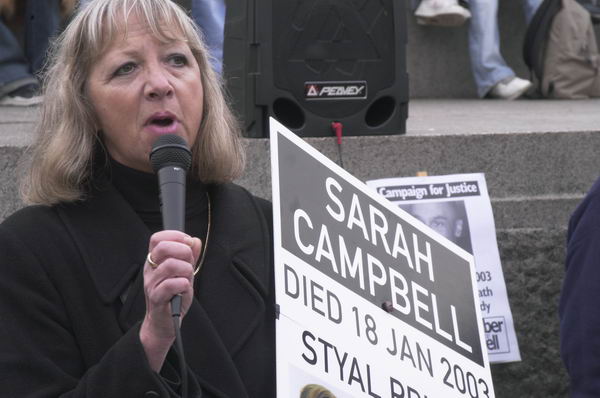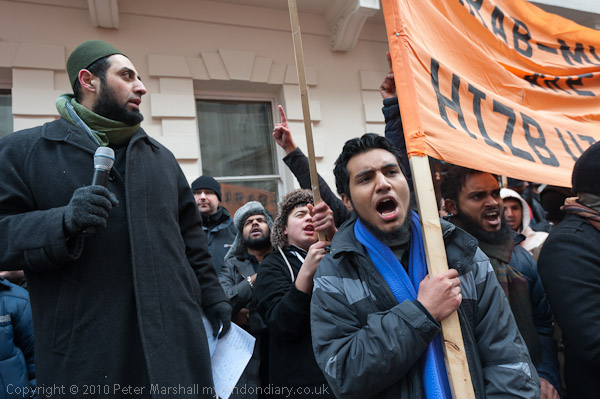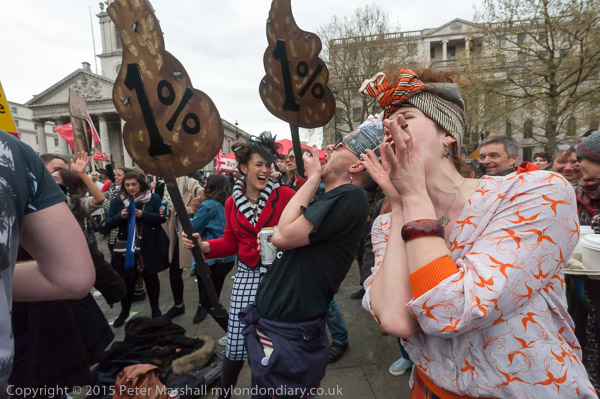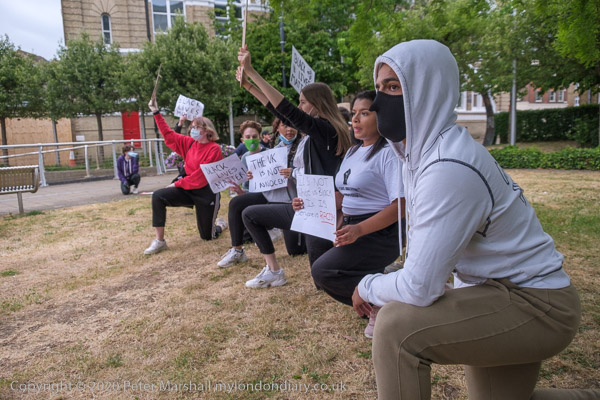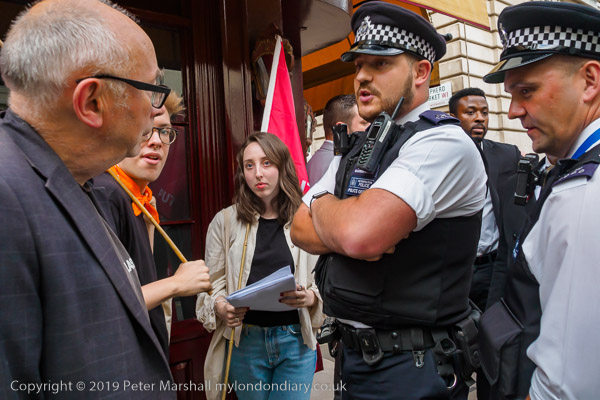Against Worldwide Government Corruption – Saturday 1st March 2014, ten years ago, saw a small but lively protest “organised, attended and led by people who are appalled at the present state of the UK and the world, and who are convinced that a better world is possible if we got rid of the greedy and corrupt who currently are in change – the party politicians and their governments, the bankers and the corporations, the warmongers and the spies.“

Of course the world is dominated by the rich and powerful and the organisations they have set up and the laws they have established to maintain there domination, though these at least in some places also offer some protection for the poor and powerless. But I don’t really believe that protests like this offer any real hope of changing the situation.

But they perhaps do show us that another world is possible one with “justice and a fairer society, one that doesn’t oppress the poor and disabled, that doesn’t spy on everyone and doesn’t use the media and the whole cultural apparatus as a way of keeping blind to what is really happening.“

It’s the kind of spirit that led to the emergence of the Labour Party and inspired many of its leaders even into my youth – and was in part rekindled by the rise of Jeremy Corbyn, propelled into the leadership of the Labour Party in 2015 by huge support from the ordinary membership. But Labour had long lost its way, its organisation and many MPs sponsored and supported by companies and wealthy individuals inherently opposed to its ideals and dedicated to the maintenance of the status quo.

The protest was a wide-ranging one, and on My London Diary I quoted at some length from the speech before the march by one of the organisers, Mitch Antony of Aspire Worldwide (Accountable System Project for International Redevelopment and Evolution.)
At the end of it he gave a long list of things the march was against:
We march against Global Government Corruption
Against Worldwide Government Corruption
We march against ideological austerity
We march against privatisation for profit
We march against the bedroom tax
We march against bankers bonuses
We march against the corrupt MPs
We march against state spying on the people
We march against state controlled media
We march against government misrepresentation
We march against warmongering
We march against global tyranny
We march against state sponsored terrorism
We march against the military industrial complex
We march against the militarisation of the police
We march against the suppression of alternative energies

The march got off to a poor start, as the advertised meeting point in Trafalgar Square was closed to the public that day, being got ready for a commercial event the following day. Not everybody who came found the new location – and there were aggrieved posts on Facebook from some who failed, though I think they cannot have tried very hard.

Police often find reasons to delay the start of marches, but these protesters were definitely not taking advice from them and set off on the dot at 2pm to march west to the Ecuadorian Embassy where Julian Assange was still confined despite being given political asylum.

On the way the several hundred marchers caused no problems and aroused some interest among those on the streets, mainly tourists. A misguided attempt by officers to stop the march on Piccadilly led to a sit down and was soon abandoned.

When they came to Harvey Nicholls in Knightsbridge some joined in the protest against the store by the Campaign Against the Fur Trade for a few minutes, and a crowd gathered around the main door shouting at this company that still deals in fur and fur-trimmed garments.

But soon people moved on to the Ecuadorian Embassy where Assange was still trapped. Police filled the steps to the building, guarding the door and stopping anyone from entering.

There were far too many people to fit inside the small penned area for protesters on the pavement opposite the Embassy. The protest here in support of of Julian Assange and Edward Snowden and other whistle blowers and over the continued refusal to grant Assange safe passage to Ecuador, continued for around an hour. Many of the protesters then saw the refusal as a personal vendetta against him by then home secretary Theresa May, but it is driven by a continual British failure to stand up to the USA.

Since then we have seen the continued persecution of Assange by successive Tory governments and his arrest and incarceration in the maximum security Belmarsh prison after a changed Ecuadorian government withdrew its protection. Attempts to extradite him to the US where he could be executed or given a 170 year prison sentence are continuing, and it seems likely he will die in prison either here or in the US for publishing material that made clear to the world the war crimes being committed by the US.

At the end of their protest in front of the Ecuadorian Embassy (it occupies only a few rooms on an upper floor of the building) marchers were leaving to go back to Westminster for another rally in Parliament Square, but I’d had enough and took the tube to make my way home.
More about the protest and many more pictures on My London Diary: Against Worldwide Government Corruption.
Flickr – Facebook – My London Diary – Hull Photos – Lea Valley – Paris
London’s Industrial Heritage – London Photos
All photographs on this page are copyright © Peter Marshall.
Contact me to buy prints or licence to reproduce.







